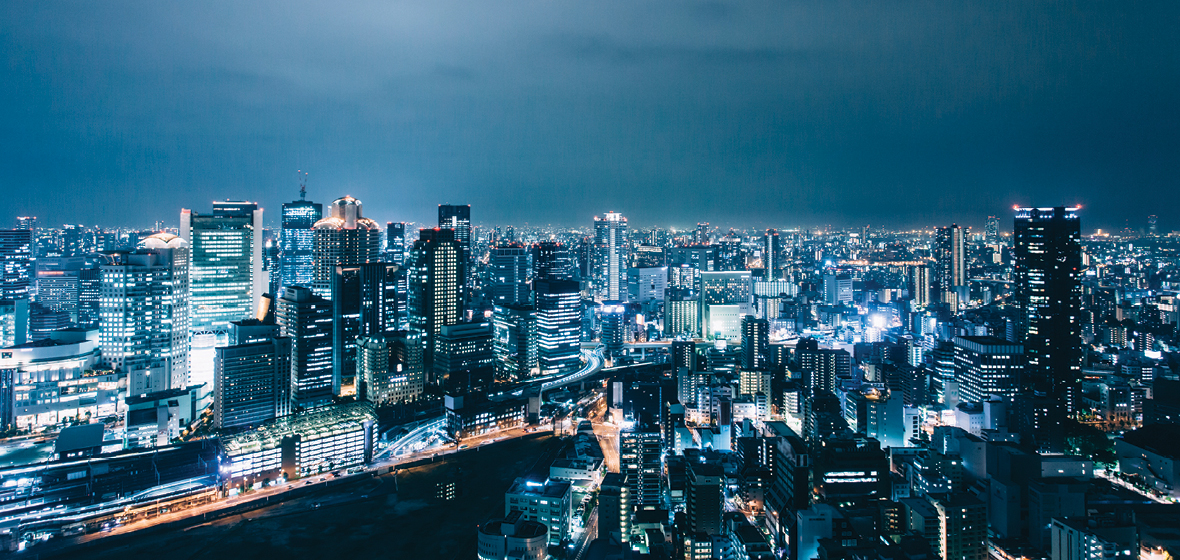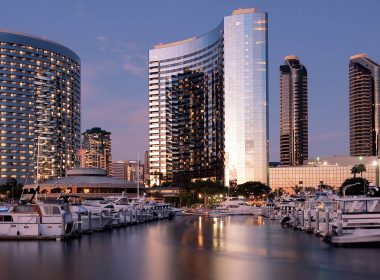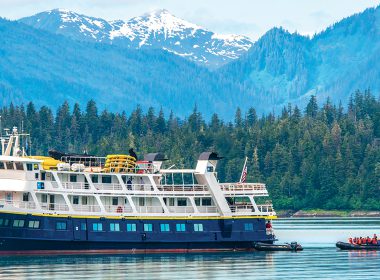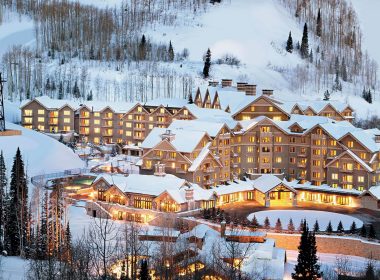Japan can seem an overwhelming place to visit, with its neon-flooded cities, K-pop, crowds, and bizarre anime-themed attractions. Where in this nation of 126 million people should a first-timer begin? The best place to get a taste for it (both literally and figuratively) is in Osaka. This city is Tokyo-lite – easier to navigate, faster to get around, and with all the fantastic appeal of a larger Japanese city. Say “konnichiwa Osaka” with this guide.
EAT
Osaka earned the nickname Tenka no Daikoro(the nation’s kitchen) during the 1700s when the city was the centre of Japan’s rice exchange. While people in Tokyo will go hungry to spend their cash on designer handbags and shoes, Osakans have always been the opposite: they prefer to fork out on food. They even have a word for it, kuidaore, which roughly translates to eating oneself into bankruptcy.
Thankfully, just a few hundred yen (the equivalent of a few Australian dollars) will buy the essential street food tasters in Osaka’s bustling Dotonbori district. Be sure to try all the weird local delicacies like takoyaki(fried octopus and pancake dough balls), kushikatsu(deep-fried meat and vegetables on skewers) and okonomiyaki(a Japanese pizza-pancake made with meat, vegetables and cabbage).
Another local delicacy is noodle soup – either in the form of ramen or udon. Ramenis the bulking meal of choice for sumo wrestlers, made with egg noodles, pork broth, meat, half-boiled eggs and vegetables. Udonis a traditionally lighter broth topped with a tempura-battered prawn. Tokumasa Udon Morinomiya, near Osaka Castle, pairs these crunchy crustacea with steaming bowls of unique curry-flavoured udon (AU$10). Be prepared to line up for at least 45 minutes. It’s worth it.
Finally, a visit to Osaka would be incomplete without a taste of local Kobe beef. Yakiniku M is TripAdvisor’s number one place in Japan and number five in Asia to try the beautifully marbled steak. 3,800 yen (AU$50) per person buys a multi-course platter of different cuts and vegetables that you can cook on the barbeque at your table in a small private room.

DRINK
First-timers will be captivated by Japan’s vending machines that pop out all kinds of beverages including cold beers, and hot coffees in cans that become hotter when you shake them (great to keep in your jacket pockets on a cold day). A red price label means hot, while blue indicates you’re buying a cold drink, so take care when preparing to quench your thirst with an iced tea.
Duck into one of the tiny, crowded izakaya(pubs) in Hozenji-Yokocho Alley for an authentic Japanese bar experience. This cobblestoned area is hidden behind Hozenji Temple and embodies old-world Osaka with its 17thcentury architecture and dark alleys lit by red lanterns. Despite my dubious Japanese language skills, most bartenders understand when I ask for a biru(beer) and edamame(the equivalent of beer nuts in Japan).
Millennials will love Osaka’s Video Game Bars, where you can play nostalgic arcade games while you drink. Space Station has no cover charge, leaving you more money to spend on the Nintendo character-themed drinks like “Floating Peach” and “Gin Sonic”.
Anime-themed Maid Cafes are another bizarre quirk of Japanese culture. Waitresses dressed as maids serve cappuccinos decorated with kawaii(cute) animal faces. Kids might love the bear-faced hamburger steaks, but the pastel-coloured drinks are not everyone’s cup of tea.

DO
Osaka has all the walking tours, bike tours and even Segway tours that you might expect from a global city. But the most exciting way to get your bearings is driving a Nintendo-themed Go-Kart through the streets at night wearing a Super Mario onesie. The two-hour MariCAR tour (about AU$115) does exactly this: whizzing you through Osaka’s central districts with a group of fellow onesie-clad Pikachus, Luigis and Donkey Kongs. You’ll need an International Driving Permit to drive the karts, which you apply for online and pick up in Australia before you go.
On a more serious note, Osaka Castle is a visual spectacle that offers lessons in Japan’s rich samurai history. Fans of The Last Samuraiwill leave itching for Tom Cruise to be cast in a Hollywood biopic as violent general Toyotomi Hideyoshi, who built the castle in 1582.
The gardens around Osaka Castle are some of the best places to view cherry blossoms (hanami) when the flowers begin to bloom in late March. The other hot spots are along the Okawa Riverand in Expo 70 Commemorative Park.
Later, you can ease your tired tourist limbs into Spa World in Shinsekai. This is a multi-floor operation full of internationally-themed hot baths. Choose a Japanese onsen in the “Asian zone” or unwind in a Finnish sauna of the “European zone”. It’s one of those “only in Japan” experiences.

STAY
Pick a hotel near Umeda Station, which is the major transport hub in Osaka and is surrounded by myriad shops, bars and restaurants. Most metro and Japan Rail (JR) train lines converge there.
The RHIGA Royal Hotel sits above a JR station and runs a free shuttle bus that ferries guests to and from Umeda around the clock. The huge breakfast buffet is fit for royalty, as are the executive suites with stately mahogany and gold furnishings. But active travellers will be dismayed by the ludicrous prices to use hotel facilities: one-time access to the pool costs AU$40, and the gym is more than AU$70 (on top of your room rate). You’re better off jogging around the corner to Gold’s Gym (about AU$25 for a casual visit). (Wherever you work out, be sure to wear outdoor shoes and bring runners in a bag with you. Japanese people have strict rules about not wearing outdoor shoes in indoor gyms.)
The nearby Hilton has less confusing rules and charges, and the room rate includes free access to the pool, gym and indoor jogging track. Or, check into the Conrad Osaka for a blend of Japanese and western luxury in one of Osaka’s shiniest new skyscrapers. The panoramic views from this high-rise are best paired with a cocktail from the hotel bar, 40 Sky Bar and Lounge.

DAY TRIP
Kyoto is Japan’s former capital and famous for its many Shinto shrines, geisha, samurai castles and traditional wooden houses. It’s a world away from the neon lights of Osaka – yet only a 15-minute journey on the bullet train from Shin-Osaka station (one metro stop north of Umeda).
The journey via bullet train (shinkansen) is a thrill in itself. You’re ushered through the train doors by guards wearing Mickey Mouse-style white gloves and rocketed to Kyoto at speeds of up to 320 kilometres an hour. When you arrive, fuel up in Cube Gourmet Street on the 11thfloor of Kyoto Station. Kyoto Nishiki Warai serves the city’s best okonomiyaki – the Japanese meat-and-vegetable-cross between a pancake and a pizza.
Next, take the Nara line to the iconic Fushimi Inari Taisha (get off at Inari station) and marvel at the 10,000 orange Torii gates dating back to 711 AD. The first kilometre of gates is packed with selfie-obsessed tourists, but you’ll lose the crowds as you hike the winding trail to the top of the mountain (about five kilometres round-trip).
Kyoto has hundreds of temples and shrines but the most impressive is the “Golden Pavilion”, Kinkaku-ji Temple, which overlooks a quiet lake north of Kyoto and is stunning during cherry blossom season (late March-early April). You can catch city bus #205 to this gold leaf-plated icon in about 30 minutes.





